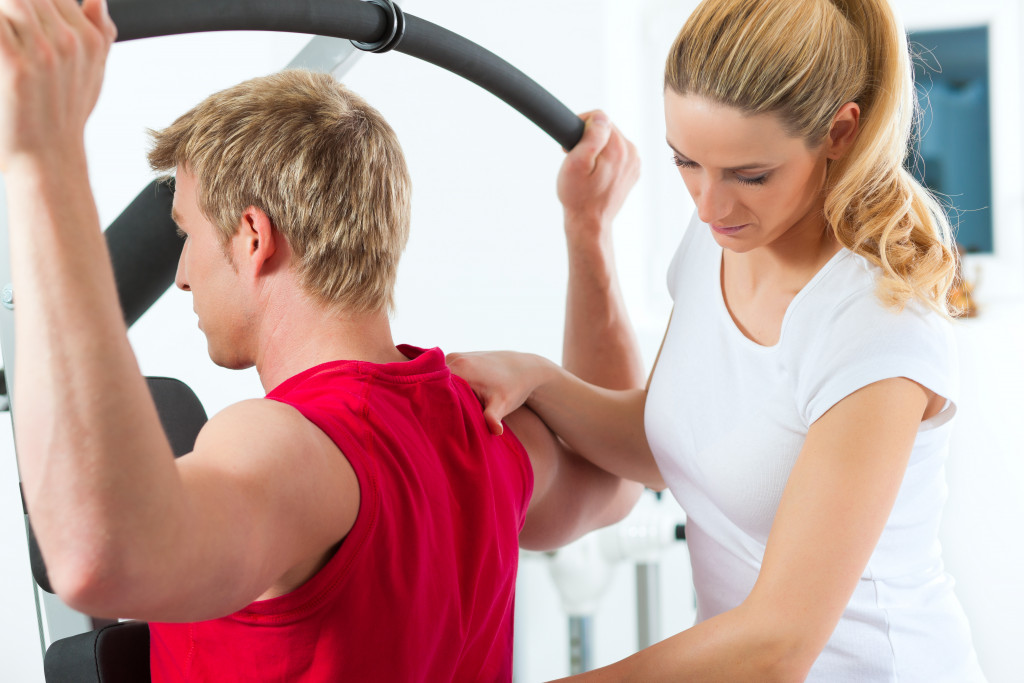- Stay active through low-impact exercises like swimming, yoga, and walking to aid your injury recovery.
- Engage in physical therapy and use adaptive equipment for targeted recovery and improved mobility.
- Maintain motivation by setting achievable goals, ensuring steady progress towards overall recovery.
- Prioritize safety by listening to your body, wearing protective gear, and seeking professional guidance.
- Support recovery with a balanced diet, hydration, rest, and supplements to promote healing and cellular repair.
Injuries can be frustrating, especially if they keep you from participating in activities you love or disrupt your daily routine. When you have an injury, staying active might be the last thing on your mind, but keeping up with exercise can aid your recovery.
Staying active can help to strengthen the injured area, prevent muscle loss, and even prevent complications such as blood clots. You can still exercise with an injury—just remember to take it slow and modify your existing workouts.
This blog post will provide tips on staying active and healthy during recovery, including low-impact exercises, physical therapy, adaptive equipment, mobility products, maintaining motivation and safety, setting realistic goals and safety precautions, seeking professional guidance, and nutrition and recovery.
Strategies for Staying Active
If you’re wondering how to stay active during recovery, here’s a helpful approach that you can consider:
Low-Impact Exercises
To stay active during recovery, try low-impact exercises. They strengthen the injured area, prevent muscle loss, and avoid excessive strain. Examples include swimming, cycling, yoga, and walking. Start slowly and gradually increase activity as you feel comfortable.
Physical Therapy
Physical therapy is invaluable for recovery. A therapist provides personalized exercises to target your injured area. They also identify muscle imbalances or weaknesses that caused the injury.
Adaptive Equipment and Mobility Products
If you have a mobility-limiting injury, products like crutches, walkers, canes, and mobility scooters can assist you. Reliable mobility products from established brands guarantee improved mobility and safety during recovery, enabling you to engage in physical activity with confidence and minimal risk of further injury.

Maintaining Motivation and Safety
Maintaining motivation in the face of recovery can be challenging, and it’s vital always to prioritize safety to avoid re-injury. Here’s how you can set realistic goals:
Setting Realistic Goals
Setting realistic goals keeps you motivated during recovery. Remember, it’s a gradual process, and you may only regain some pre-injury abilities after some time. Instead, focus on small, achievable goals to make steady progress in your overall recovery.
Safety Precautions
During recovery, prioritize safety by wearing necessary protective equipment like a brace or cast. Listen to your body and avoid overexertion. Taking it slow prevents further injury and promotes faster recovery.
Seeking Professional Guidance
To ensure a successful recovery, seek professional guidance. Consult your doctor, physical therapist, or healthcare professional to create a safe and effective exercise program. They can also offer advice on equipment and precautions.
Nutrition and Recovery
Alongside these helpful suggestions for maintaining an active lifestyle during the recovery process, it’s important not to underestimate the significance of nutrition in promoting a swift recovery. Here’s a guide on seamlessly integrating nutrition into your recovery regimen:
The Role of Dietary Choices in Recovery
Your diet plays a crucial part in aiding recovery. Consuming nutritious foods gives the body the necessary energy and resources to heal. Similarly, staying well-hydrated maintains optimal body function, helping heal.
Supporting Healing Through Diet
Your diet impacts your recovery. Eat a balanced diet with protein, healthy fats, and complex carbs to support your body’s healing process. Foods rich in vitamin C or zinc can reduce inflammation and promote healing.
Hydration and Rest
Proper hydration and rest are also crucial during your recovery process. Ensure you drink enough water throughout the day to help flush out toxins and support cellular repair. Getting enough sleep at night can also help your body recover, so try to aim for 7-9 hours of sleep each night.
Supplements and Vitamins
Besides maintaining a healthy diet, incorporating specific supplements and vitamins into your routine can aid your recovery. For instance, Omega-3 fatty acids have been shown to reduce inflammation and facilitate the healing process effectively. Vitamin C, zinc, and magnesium can also support your body’s overall recovery journey.

Recovering from an injury involves more than waiting for the body to heal. It requires rest, regular movement, proper nutrition, and a positive mindset. Staying active during recovery aids healing and prevents complications. However, physical activity should be done responsibly and under professional guidance.
Opting for low-impact exercises, setting realistic goals, and using adaptive equipment contribute to an effective and safe recovery. Nutrition and adequate rest also promote faster healing.

